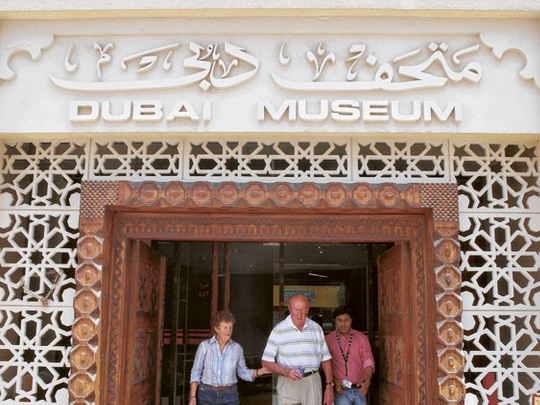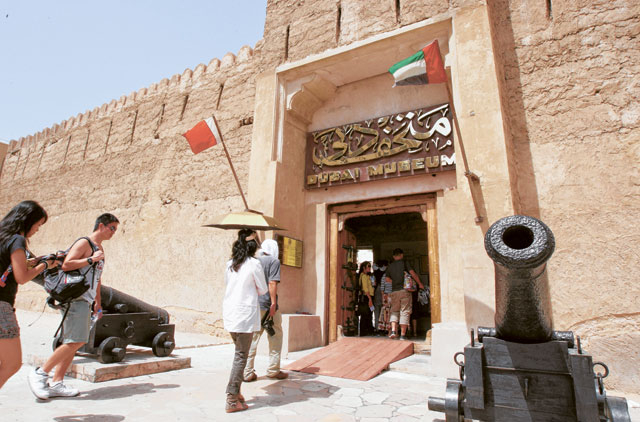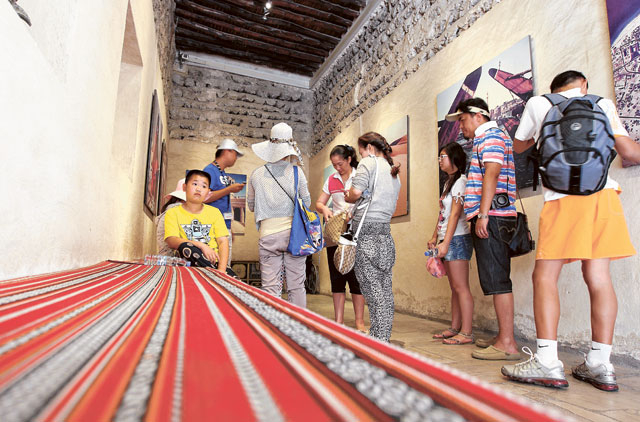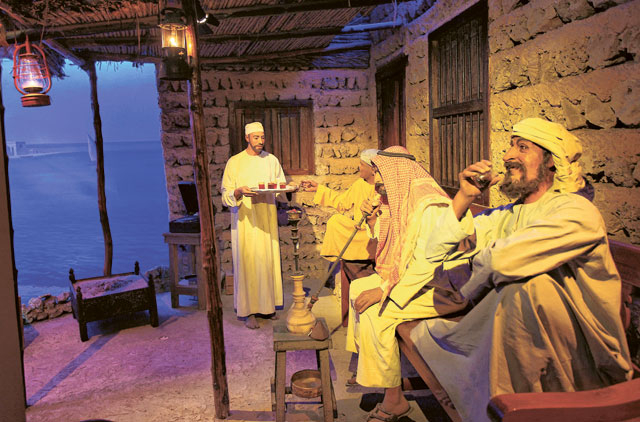
Dubai: Al Fahidi Fort continues to proudly stand in Bur Dubai since its construction in the late 18th century, and has enthralled visitors with its museum for more than 40 years with a diverse collection of objects that reflect the country's traditional way of life.
Forts were built to defend the city against invasions from the sea, and some of them still stand today, such as Naif Fort, Old Hatta Fort and Al Fahidi Fort. Security was the main reason why UAE cities were situated on the seashore, and settlements on both sides of the creek — Deira and Bur Dubai — were surrounded by walls with gates and watchtowers.
Al Fahidi Fort is featured on the Dh100 note and has become an important landmark as it is the oldest existing building in Dubai.
The fort was built in 1799 and major expansion work was carried out on it from the 1830s to 1850s under the rule of the late Shaikh Maktoum Bin Butti. In 1971, Dubai Municipality renovated the fort and turned it into a home for Dubai Museum that offered several dioramas of the region's culture before the discovery of oil, as well as artefacts that date back to 3000 BC.
By 1994, the fort was completely restored in accordance with the municipality's policy in preserving historical sites in the emirate.
Storing ammunition
The walls of Al Fahidi Fort were originally built from coral and shell rubble from the sea, and were cemented together with lime. It was built not only to defend the town of Dubai, but also served as an office and residence of the Ruler, as well as a prison and a place to store ammunition.
Khalid Al Bu Obaid, a history teacher from Saudi Arabia, was visiting the museum for the first time, and pointed out that it reflected how the UAE has embraced its past.
"Al Fahidi Fort is a landmark in the Gulf, and in the UAE in particular. It was interesting to get acquainted with the country's prehistoric period, and how the people lived in the past. I was also stunned by the organisation of antiquities and how they were displayed in the small museum."
Al Fahidi Fort is square shaped at 41 metres long and 33 metres wide and equipped with three towers, in addition to a series of long rooms that overlook the courtyard. The main entrance of the door to the fort is made of solid teak, studded with large iron nails, and brass plates have been fixed on the door.
Jane and Graham Lawrence, a married couple from the UK, were on their first visit to Dubai and made sure they included the fort as one of their main destinations during their stay.
"The fort was well-featured in tour guides, and I am quite impressed because you can see it from all over. The actual brickwork is beautiful. As I work in a school, I get inspired from my visits abroad and can't wait to explain all about it to my students," explained Jane.
Traditional souq
Visitors can find boats carved out from tree trunks, weapons such as cannons, swords, pistols and khanjars (daggers), in addition to a replica of a traditional souq where narrow alleys are filled up with shops of spice traders, barbers, tailors and ironsmiths.
"I noticed that the weapons used were more like a status symbol and were beautifully made, like jewellery. It's not at all like the Saxon weapons, which were crude. It's interesting to see how the houses were made with wind towers, and you can see how construction was based on the climate," said Graham enthusiastically.
Located in the commercial district along Al Fahidi Street, the fort is surrounded with electronics shops as well as dozens of textile and handicraft shops, hotels and restaurants that are scattered sporadically around the district.
One of the oldest shops in the area is that of Suresh Gandhi's, whose shop specialises in selling men's textiles as wholesale. Gandhi's family business, Arabian Traders, was set up by his grandfather in 1919 who used to trade back and forth between Karachi and Dubai. As the country started to develop in the late 1950s, the business thrived in Dubai and by 1958 the shop was initially opened near the Creek.
"We relocated closer to the fort about ten years ago because the space for rent was a lot bigger than the one we had. Al Fahidi Street has changed so much, and I remember that in the 1960s the area was very small and there were only the villas in Al Bastakiya," added Gandhi.
Thousands of sightseers make a beeline for Al Fahidi Fort, which houses Dubai Museum. It is an oasis of calm in the busy Bur Dubai area and gives a great insight into how Emiratis lived in the past. The fort was built in 1799 and was later expanded. Its original walls were built from coral and shell rubble from the sea and cemented together with lime. The museum is open every day and admission is inexpensive.
Used also as a prison
Al Fahidi Fort is situated in Bur Dubai and lies along the bustling street of Al Fahidi, which is close to the Bastakiya area, the Grand Mosque and Dubai Souq.
The fort was built in 1799 and major expansion work was carried out on it from the 1830s to 1850s. Throughout various times in history, the fort served as an office and residence of the Ruler, as well as a prison and a place to store ammunition.
Dubai Municipality carried out renovation work and in 1971, Dubai Museum was set up inside the fort.
- Dubai Museum is open from Saturday to Thursday, from 8.30am-8.30pm, and on Friday from 2.20pm-8.30pm.
- Entry fee: Dh3 for adults and Dh1 for children
There is a piece of history in the money that you carry. UAE banknotes portray landmarks in the country. In this report we feature Al Fahidi Fort pictured on the Dh100 note









